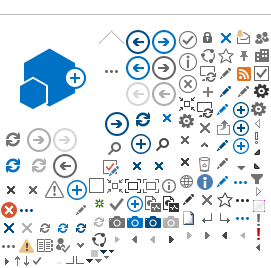Solution Lifecycle: Managing Changes to Your Solution
The lifecycle of a Bluespring Solution, then, consists of three major steps: configuring the Solution Items in BPM Designer, Publishing the Solution to Runtime Environments and testing the Solution Items in a Runtime Environment. Over time, you can manage changes to your Solution by iterating through these 3 steps: Configure, Publish, and Test, until your Solution passes all of your tests, at which point you can Publish to your Production Runtime Environment so your Users can begin running Processes.
During the Lifecycle of your Solution, make sure to document your changes thoroughly. When you configure your Solution Items in BPM Designer, make sure to save your Solution Items frequently. Once you have completed your work, Check In your Solution Items so they are available for other Users. During the Check In event, make sure to follow your team's methodology for choosing the Check In Type (Major, Minor or Revision) and provide quality Comments for the changes included in this version of the Solution Items.
When you Publish a Solution, double-check to make sure you are Publishing to the correct Runtime Environment and then provide Comments for the Publish Set.
By using the Comments, then, you make it easier to find previous Versions of your Solution Items, allowing you to correct errors or revert to previous versions. For example, you may Publish a Solution to your Production Runtime Environment but continue improving your Solution with additional functionality; later, you find an error in the Solution running in Production. So, you need to be able to load the Version of your Solution running in Production and troubleshoot it. You should be able to identify the correct Version of your Solution using BPM Designer: open the Solution in BPM Designer, right-click on the Solution Name and select "View Publish History" from the context menu. Within the Publish History window, select the Production Runtime Environment from the drop-down menu and use the Comments to identify the Version encountering the error. Select the Publish Set and click [Load Publish Set]. BPM Designer will now display the Solution as it was configured for the Publish Set as well as Check Out each Solution Item as it existed at the time of Publishing. Once you have identified your starting point, you can then work your 3 steps: Configure, Publish and Test, until you have corrected the problem. Then, you can Publish the corrected version of your Solution to your Production Runtime Environment. When you Publish, make sure to select "Effective Immediately: current and new process instances," which will ensure those process instances currently encountering the problem will take advantage of your updated configuration. You can then use the Version History of your Solution Items (or the Publish History of your Development Runtime Environment) to load versions of your Solution Items which include your new functionality, without interrupting your testing or your Production processes.
Managing changes to your Solution, then, becomes a matter of identifying a starting point (a Version or Publish Set) and iterating through your three steps, configure, publish and test, until you are ready to make your new or corrected functionality available for your Users. BPM Designer allows you to find your starting point, but you should use Comments to make it easy for other Users to identify a starting point. You can use the Save and Check In functions to preserve your work as you develop your Solutions. You can use Publish events to track when your Solution moves through various stages of its development through testing, User Acceptance Testing and into Production.

